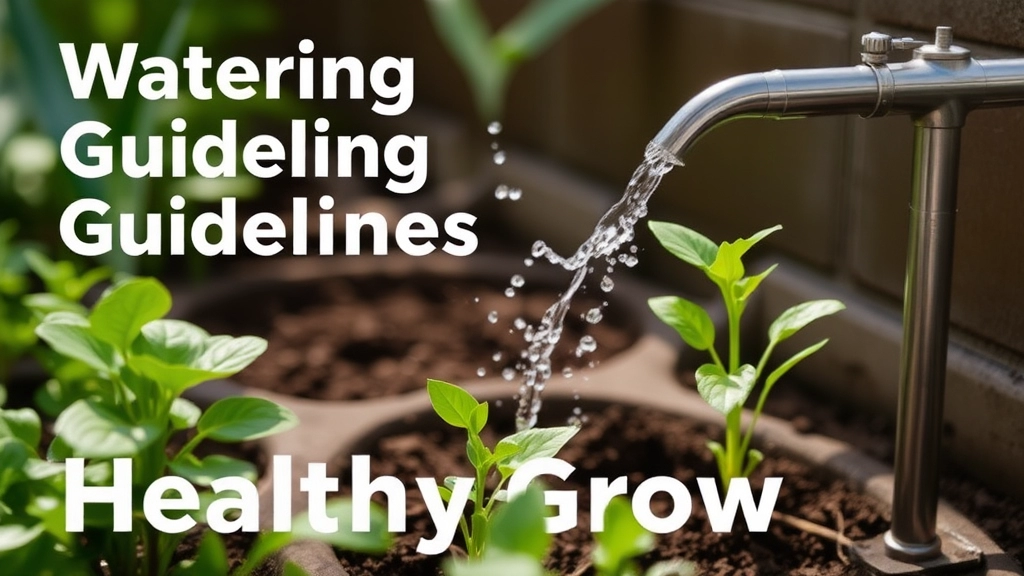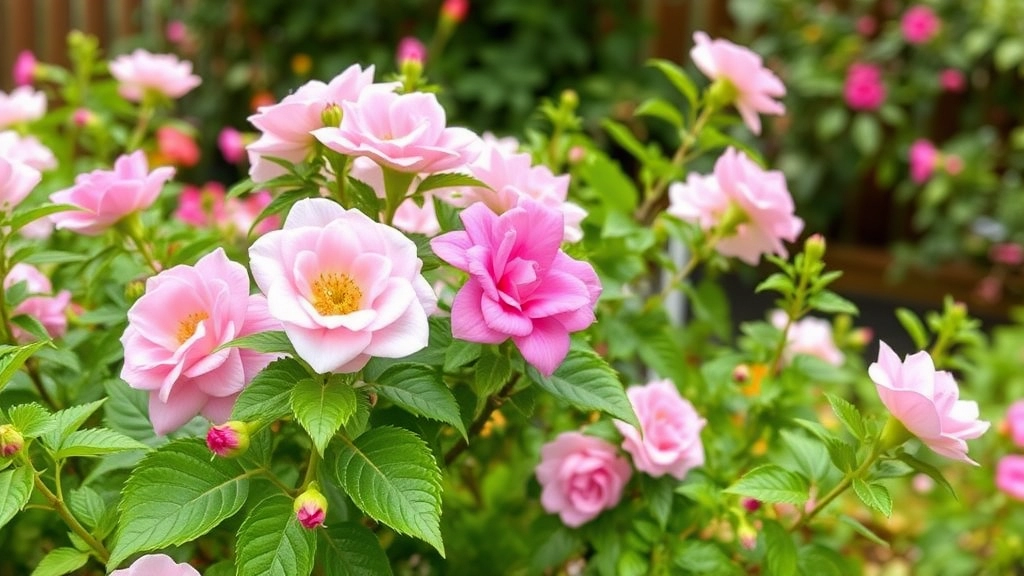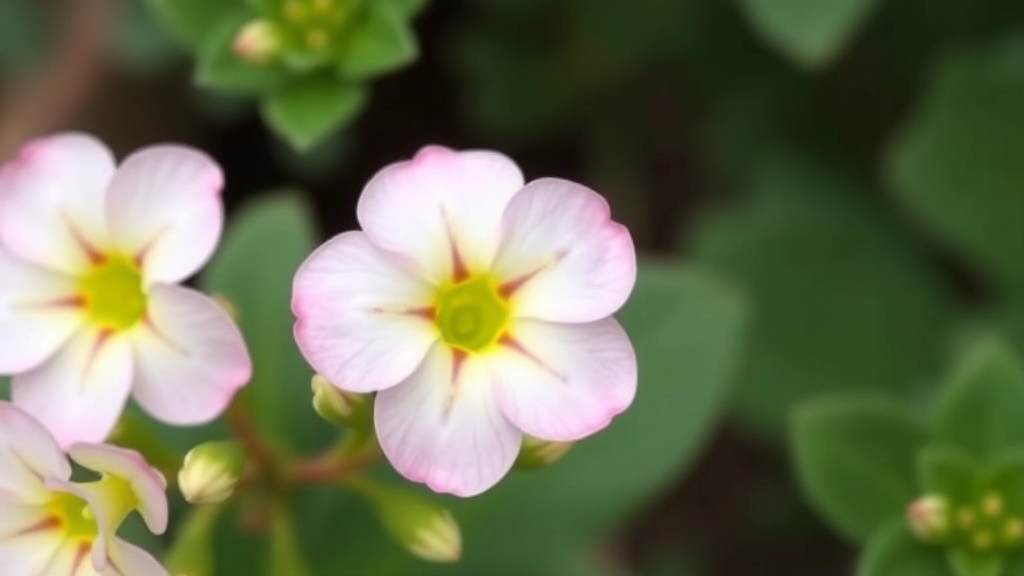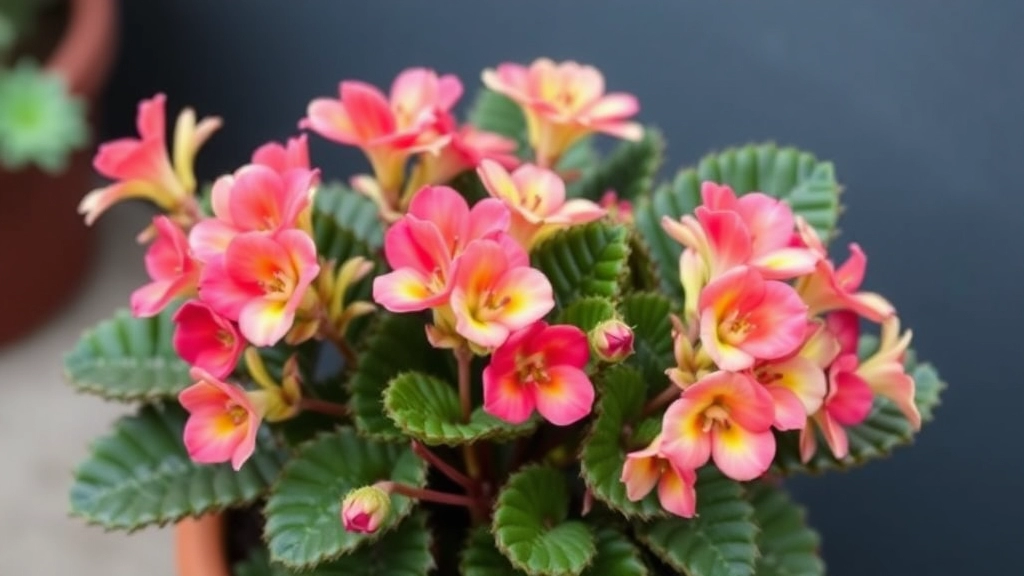Florist Kalanchoe Plant Care
When it comes to Florist Kalanchoe plant care, understanding the basics can make all the difference in keeping your plant vibrant and healthy. From choosing the right soil to ensuring proper watering, each step is crucial. This guide will walk you through essential tips for optimal growth, including light requirements, ideal temperature and humidity, and effective fertilizing techniques.
Additionally, we’ll cover pruning methods to encourage new blooms, pest prevention strategies, and how to get your Kalanchoe to rebloom. Whether you’re a seasoned gardener or a beginner, these practical insights will help you master Florist Kalanchoe plant care and enjoy its beautiful, long-lasting flowers.
When it comes to cultivating a thriving Florist Kalanchoe, one of the most crucial decisions you’ll make is selecting the right soil. You might be wondering, “What type of soil is best for my Kalanchoe?” The answer lies in understanding the plant’s needs and the soil’s properties.
Key Characteristics of Ideal Soil:
– **Well-Draining**: Kalanchoe plants are succulents that thrive in well-draining soil. This prevents root rot, a common issue caused by excess moisture.
– **Lightweight**: A lightweight mix allows for good aeration, ensuring that the roots can breathe and absorb nutrients effectively.
– **pH Level**: Aim for a slightly acidic to neutral pH level (around 6.0 to 7.0), which is optimal for the growth of Kalanchoe.
Recommended Soil Mix:
– **Cactus or Succulent Mix**: These pre-made mixes are designed specifically for plants like Kalanchoe, providing the right balance of drainage and nutrients.
– **DIY Option**: If you prefer to make your own soil, combine:
– 2 parts potting soil
– 1 part perlite or coarse sand
– 1 part peat moss or coconut coir
By ensuring your Kalanchoe is planted in the right soil, you set the foundation for healthy growth and vibrant blooms. For more detailed advice on soil selection, you can refer to our [best soil for Kalanchoe Blossfeldiana care tips](https://planthq.org/best-soil-for-kalanchoe-blossfeldiana-care-tips/).
Additionally, understanding the [optimal care for Kalanchoe Blossfeldiana growth](https://planthq.org/optimal-care-for-kalanchoe-blossfeldiana-growth/) can further enhance your plant’s health and longevity.
Watering Guidelines for Healthy Growth

Are you worried about how much water your Florist Kalanchoe really needs?
I get it—too little or too much can be a real struggle.
Let’s break it down so you can keep your plant thriving.
Understanding Your Kalanchoe’s Needs
Kalanchoes are succulents, which means they store water in their leaves.
This unique trait means they don’t need constant watering like other houseplants.
Here’s how to nail it:
- Check the Soil: Before watering, stick your finger about an inch into the soil. If it feels dry, it’s time to give it a drink.
- Water Deeply: When you do water, make sure to soak it through. This encourages the roots to grow deeper.
- Drainage is Key: Ensure your pot has drainage holes. Standing water can lead to root rot, which is a big no-no for Kalanchoes.
- Frequency: Generally, watering every 2-3 weeks is a good rule of thumb, but this can change with the seasons. In winter, they need even less.
Signs of Overwatering
Ever seen your Kalanchoe looking droopy or yellow?
That could mean you’re giving it too much water.
Keep an eye out for these signs:
- Yellowing leaves
- Mushy stems
- A musty smell from the soil
If you spot these, cut back on the watering and let the soil dry out a bit.
Seasonal Adjustments
As the seasons change, so do your watering habits.
In the warmer months, your Kalanchoe might need a bit more water due to increased evaporation.
In contrast, during winter, it’s likely to need much less.
Light Requirements for Optimal Flowering
Are you struggling to get your Kalanchoe to bloom? One of the most crucial factors in ensuring vibrant flowers is providing the right light conditions.
Understanding Light Needs
Florist Kalanchoe thrives in bright, indirect sunlight. Here are some key points to consider:
- Direct Sunlight: While Kalanchoe can tolerate some direct sunlight, too much can scorch the leaves. Aim for about 3-4 hours of morning sun.
- Indirect Light: Placing your plant near a window with filtered light is ideal. A sheer curtain can help diffuse harsh rays while still allowing ample light.
- Artificial Lighting: If natural light is limited, consider using grow lights. Position them about 12-18 inches above the plant for optimal results.
Signs Your Kalanchoe is Happy with Light
- Healthy Growth: If your plant is stretching towards the light, it’s a sign it needs more.
- Vibrant Flowers: Bright blooms indicate that your Kalanchoe is receiving enough light.
- Leaf Colour: Dark green leaves suggest proper light levels, while pale or yellowing leaves may indicate too much direct sun.
Adjusting Light Conditions
- Seasonal Changes: As seasons change, so should your plant’s location. Move your Kalanchoe closer to windows during winter months when sunlight is limited.
- Rotating the Plant: Every few weeks, rotate your Kalanchoe to ensure even light exposure on all sides.
For more detailed care instructions, check out our Florist Kalanchoe Plant Care Guide and learn how to make your Kalanchoe thrive indoors. Additionally, if you’re curious about different varieties, explore our comprehensive guide to Kalanchoe species.
Ideal Temperature and Humidity Conditions

When it comes to nurturing your Florist Kalanchoe, understanding the ideal temperature and humidity conditions is essential for fostering vibrant blooms. Have you ever wondered why your Kalanchoe isn’t thriving as expected? Temperature and humidity could be the culprits.
Temperature
Florist Kalanchoe thrives best in temperatures ranging from 18°C to 24°C (65°F to 75°F). Here are some key points to consider:
- Avoid Extreme Cold: Temperatures below 10°C (50°F) can stress the plant.
- Keep Away from Heat Sources: Radiators and direct heat can lead to wilting.
- Nighttime Temperatures: A slight drop at night is acceptable but should remain above the lower threshold.
Humidity
Humidity plays a crucial role in the overall health of your Kalanchoe. Here’s what to keep in mind:
- Moderate Humidity: Aim for around 40% to 60% humidity for optimal growth.
- Avoid Excess Moisture: High humidity can lead to fungal issues.
- Dry Environments: If your home is particularly dry, consider using a humidity tray or misting occasionally, but avoid overdoing it.
Fertilizing Your Florist Kalanchoe
Are you wondering how to keep your Florist Kalanchoe thriving?
Fertilizing is a key aspect of ensuring vibrant blooms and robust growth.
Pruning and Deadheading to Encourage New Blooms

So, you’ve got your Kalanchoe thriving, but are you getting the most out of those gorgeous blooms?
Pruning and deadheading are your secret weapons for keeping your Florist Kalanchoe looking vibrant and encouraging those beautiful flowers to keep coming back.
Why Prune?
- Remove dead or wilted flowers.
- Encourage new growth.
- Shape the plant for a fuller appearance.
When to Prune:
- Right after flowering is the best time.
- This gives the plant a chance to focus on new growth rather than expending energy on old blooms.
How to Prune:
- Use clean, sharp scissors or pruning shears.
- Cut just above the leaf node where the flower stem meets the plant.
- Aim to remove about one-third of the plant if it’s getting leggy.
Deadheading Basics:
Deadheading is simply removing spent flowers to promote further blooming. Here’s how to do it:
- Snip off the flower stalks at the base.
- Do this regularly to keep the plant looking tidy.
- It can also help prevent disease by improving air circulation.
Quick Tips for Pruning and Deadheading:
- Always sterilize your tools to avoid spreading diseases.
- Don’t be afraid to be a bit ruthless; Kalanchoes are resilient!
- Keep an eye out for any signs of pests while you’re at it.
By keeping your Kalanchoe pruned and deadheaded, you’ll encourage it to focus on producing new blooms rather than wasting energy on the old ones.
How to Prevent Common Pests and Diseases
As we delve into the care of your Florist Kalanchoe, it’s crucial to address a significant concern: pests and diseases. These can hinder the growth and blooming of your beloved plant, causing stress for both you and your Kalanchoe.
Tips for Getting Your Kalanchoe to Rebloom

So, you’ve enjoyed the vibrant blooms of your Kalanchoe, but now you’re wondering how to coax those lovely flowers back for another show.
It’s a common concern for many plant lovers, but don’t worry; I’ve got some straightforward tips to help you get your Kalanchoe blooming again.
1. Light is Key
- Bright Indirect Light: Make sure your Kalanchoe gets plenty of bright, indirect sunlight.
- Rotate the Plant: Every now and then, give it a gentle turn to ensure all sides get equal light.
2. Watering Wisely
- Let It Dry: Allow the soil to dry out completely between waterings.
- Avoid Overwatering: Too much water can lead to root rot, which will stop your plant from blooming.
3. Pruning for New Growth
- Deadhead Flowers: Once the blooms fade, snip them off. This encourages the plant to focus its energy on new growth.
- Trim Back Leaves: If the leaves are looking a bit scraggly, a light trim can help rejuvenate the plant.
4. Fertilizing for Boost
- Use a Balanced Fertilizer: Feed your Kalanchoe with a balanced fertilizer every few weeks during the growing season.
- Dilute It: Make sure to dilute the fertilizer to about half-strength to avoid burning the roots.
5. Temperature Control
- Cool Down: After blooming, keep your Kalanchoe in a cooler spot (around 15-18°C) for a couple of weeks.
- Avoid Drafts: Keep it away from chilly drafts and sudden temperature changes.
6. Encourage Dormancy
- Rest Period: Allow your Kalanchoe a short rest period after blooming. This helps it gather energy for the next round of flowers.
- Less Water and Light: Cut back on water and light during this time.
7. Patience is a Virtue
- Give It Time: Sometimes, it just takes a little patience. Your Kalanchoe may need a few weeks to gather its strength before it blooms again.
Propagation Methods: Stem Cuttings and Offsets
As we explore how to care for your Florist Kalanchoe, it’s essential to consider propagation methods. This allows you to expand your collection or share with friends.
Propagation Methods Overview
There are two primary ways to propagate your Kalanchoe: stem cuttings and offsets. Each method has its own charm and benefits.
Stem Cuttings
Stem cuttings are a straightforward way to propagate your Kalanchoe. Here’s how to do it:
- Select a Healthy Stem: Choose a robust stem with several leaves.
- Cut the Stem: Use sterilised scissors to take a cutting about 10 cm long.
- Let it Callous: Place the cutting in a dry spot for a few hours to allow the cut end to callous over.
- Plant in Soil: Insert the cutting into well-draining soil, making sure it’s stable.
- Water Sparingly: Water lightly and place it in bright, indirect light.
Tip: Keep the soil slightly moist but never soggy.
Offsets
Offsets are small plantlets that grow at the base of the parent plant. They are also easy to propagate:
- Identify Offsets: Look for small plants connected to the main stem.
- Gently Remove: Carefully twist or cut the offset away from the parent plant.
- Prepare for Planting: Allow the offset to dry for a few hours to form a callous.
- Plant in Soil: Place the offset in a pot with well-draining soil.
- Water Lightly: Similar to stem cuttings, water sparingly until established.
Note: Offsets often establish roots faster than stem cuttings.
For more detailed instructions, check out our step-by-step guide to fuzzy Kalanchoe propagation. Additionally, if you’re interested in other propagation techniques, you might find our guide on propagating Kalanchoe Mother of Thousands useful.
Seasonal Care: Transitioning Between Indoors and Outdoors

So, you’re wondering how to move your Florist Kalanchoe from indoors to outdoors, or vice versa? It can feel a bit daunting, but don’t sweat it!
Timing is Key
When the weather starts warming up in spring, it’s the perfect time to transition your Kalanchoe outside. But, if you’re in the UK, keep an eye on those pesky late frosts.
Gradual Acclimatization
Your plant needs to adjust to the new environment. Here’s how:
- Start with a few hours: Place it in a shaded spot outside for about 2-3 hours.
- Increase exposure gradually: Each day, add an hour or two of sunlight.
- Watch for stress: If the leaves start to droop, pull back a bit.
Indoor Considerations
When bringing your Kalanchoe back indoors:
- Check for pests: A quick inspection can save you headaches later.
- Choose a bright spot: They thrive on natural light, so aim for a sunny windowsill.
- Avoid drafts: Keep them away from chilly breezes or heat sources.
Watering Adjustments
Outdoors, your Kalanchoe may need more water due to increased evaporation. Indoors, scale back a bit to avoid soggy soil.
As we delve deeper into caring for your Florist Kalanchoe, it’s essential to address a common concern: overwatering. This is a frequent issue that can lead to a host of problems for your plant.
### Recognising Overwatering
How can you tell if your Kalanchoe is receiving too much water? Here are some telltale signs:
– **Yellowing Leaves:** If the leaves start to turn yellow, it’s often a sign of stress from excess moisture.
– **Wilting:** Ironically, overwatered plants can appear wilted due to root rot.
– **Mushy Stems:** A soft, mushy texture on the stems indicates that the roots may be rotting.
– **Foul Odour:** A smell of decay coming from the soil can signal that the roots are struggling.
### Fixing Overwatering
If you suspect your Kalanchoe is overwatered, take these steps to remedy the situation:
1. **Stop Watering:** Allow the soil to dry out completely before watering again.
2. **Check Drainage:** Ensure that your pot has adequate drainage holes. If not, consider repotting.
3. **Inspect Roots:** If the plant continues to struggle, carefully remove it from the pot and check the roots. Trim away any black or mushy roots.
4. **Repot:** Use fresh, well-draining soil to repot your Kalanchoe. This will provide a healthier environment for recovery.
5. **Adjust Watering Schedule:** Going forward, water only when the top inch of soil feels dry.
By addressing overwatering promptly, you can help your Kalanchoe regain its health and vitality. For more detailed advice, check out our [complete guide to Kalanchoe plant care](https://planthq.org/complete-guide-to-kalanchoe-plant-care/) and learn how to [make your Kalanchoe flower again](https://planthq.org/how-to-make-your-kalanchoe-flower-again/).
Troubleshooting Blooming Issues with Your Florist Kalanchoe
So, you’ve done everything right, yet your Florist Kalanchoe isn’t blooming as it should. Frustrating, right?
Let’s dive into some common blooming issues and how to tackle them like a pro.
Common Reasons for Non-Blooming
- Insufficient Light
Kalanchoes love bright, indirect sunlight. If they’re not getting enough, they might just sulk instead of bloom. - Overwatering
Too much water can lead to root rot, which can stop blooming. Make sure the soil dries out between waterings. - Temperature Stress
These plants prefer a stable environment. Extreme cold or heat can hinder their flowering. - Nutrient Imbalance
Too much nitrogen can lead to lush foliage but few flowers. A balanced fertiliser is key. - Not Enough Rest
Kalanchoes need a dormancy period. If they’re kept in bloom mode year-round, they’ll get tired.
Quick Fixes to Encourage Blooms
- Adjust Light: Move your plant to a brighter spot if it’s looking a bit dull.
- Check Watering: Let the top inch of soil dry out before watering again.
- Monitor Temperature: Keep them in a comfortable range
FAQs on Florist Kalanchoe Plant Care
How often should I water my Florist Kalanchoe?
Generally, watering every 2-3 weeks is a good rule of thumb, but this can change with the seasons. In winter, they need even less. Always check the soil first; if it feels dry an inch below the surface, it’s time to water.
What are the signs of overwatering my Kalanchoe?
Signs of overwatering include yellowing leaves, mushy stems, and a musty smell from the soil. If you notice these symptoms, cut back on watering and let the soil dry out.
What temperature range is ideal for my Florist Kalanchoe?
Florist Kalanchoe thrives best in temperatures ranging from 18°C to 24°C (65°F to 75°F). Avoid exposing the plant to temperatures below 10°C (50°F).
How do I maintain the right humidity for my Kalanchoe?
Aim for around 40% to 60% humidity. Avoid excess moisture to prevent fungal issues, and consider using a humidity tray or occasional misting in particularly dry environments.
When and how should I prune my Kalanchoe?
The best time to prune is right after flowering. Use clean, sharp scissors or pruning shears to cut just above the leaf node where the flower stem meets the plant. Remove about one-third of the plant if it’s getting leggy.
What is deadheading, and how do I do it?
Deadheading is the process of removing spent flowers to promote further blooming. Snip off the flower stalks at the base and do this regularly to keep the plant tidy and encourage new blooms.
How can I get my Kalanchoe to rebloom?
Ensure your Kalanchoe gets plenty of bright, indirect sunlight and allow the soil to dry out completely between waterings. Prune dead flowers and trim back leaves to encourage new growth. Use a balanced fertilizer during the growing season and maintain a cooler temperature after blooming.
How do I transition my Kalanchoe between indoors and outdoors?
In spring, start by placing your Kalanchoe in a shaded spot outside for a few hours and gradually increase exposure to sunlight. When bringing it back indoors, check for pests, choose a bright spot, and avoid drafts.
Do I need to adjust watering when moving my Kalanchoe outdoors?
Yes, outdoors, your Kalanchoe may need more water due to increased evaporation. Indoors, scale back watering to avoid soggy soil.
References
-
How to Water a Kalanchoe Plant
-
Kalanchoe Plant Care Guide
-
Growing and Caring for Kalanchoe
